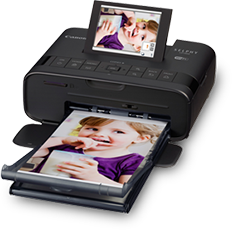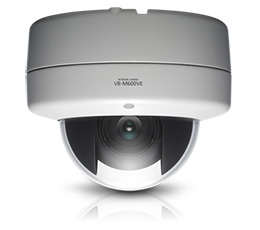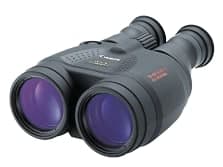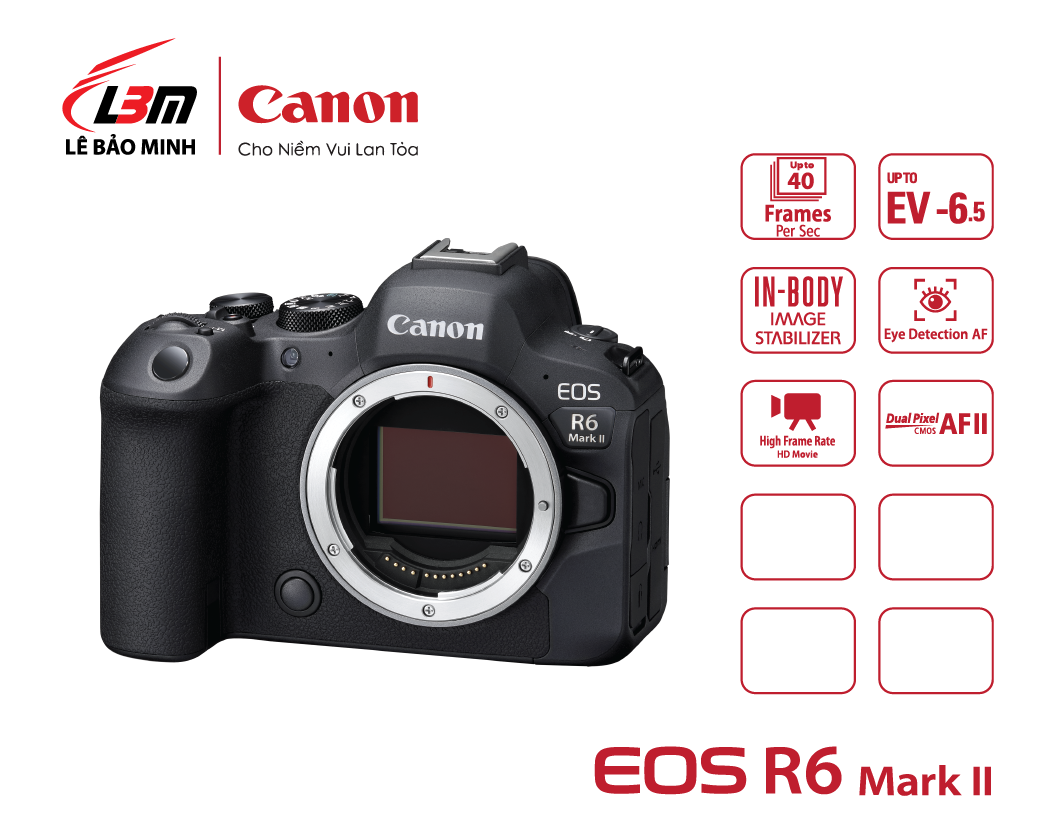
Máy in đơn năng
- Máy in laser
- - Máy in laser trắng đen
- - Khổ A4
- - Khổ A3
- - Máy in laser màu
- - Khổ A4
- - Khổ A3
- Máy in phun
- - In Trắng đen
- - In Màu
- - Khổ A4
- - Khổ A3
- - Khổ A2
- Máy in khổ lớn
- - Máy in phun khổ lớn
- - Khổ A1 (24 inch)
- - Khổ A0 (36 inch)
- - Khổ B0 (44 inch)
- - Khổ 1524mm (60 inch)
- - Bộ Scan máy in khổ lớn
- - Khổ A1 (24 inch)
- - Khổ A0 (36 inch)
- - Khổ B0 (44 inch)
- Xem thêm
Máy ảnh Canon EOS R6 Mark II Body
87.480.000 đ
-
Tính năng
-
Thông số kỹ thuật
EOS R6 Mark II: Bạn đồng hành mới cho những người đam mê nhiếp ảnh và các nhà làm phim không chuyên
Chụp liên tục tốc độ cao lên đến khoảng 40 khung hình / giây, không bao giờ bỏ lỡ khoảnh khắc tuyệt vời
So với EOS R6, hiệu suất chụp liên tục của EOS R6 Mark II đã được cải thiện đáng kể. Tốc độ chụp liên tục tối đa với màn trập điện tử có thể đạt khoảng 40 khung hình/giây, cao gấp đôi so với EOS R6. Màn trập điện tử tốc độ cao cho phép chụp liên tục tốc độ cao ở những cảnh không phù hợp với âm thanh cửa trập, chẳng hạn như động vật hoang dã, rạp hát, buổi hòa nhạc, đánh golf, v.v. Khi sử dụng màn trập cơ học hoặc màn trập màn trước điện tử, tốc độ chụp liên tục tối đa có thể đạt khoảng 12 khung hình/giây.

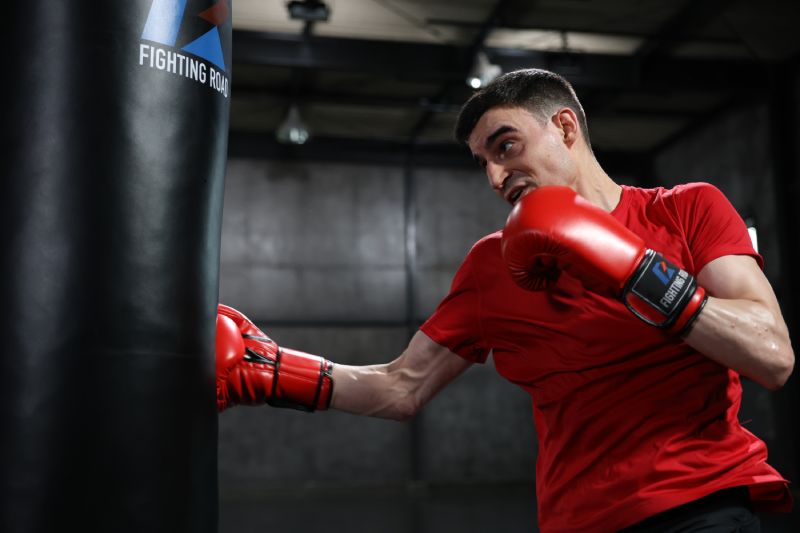
Ngoài hiệu suất chụp liên tục rất cao của màn trập điện tử, Canon còn trang bị chế độ chụp liên tục RAW (RAW Burst) lần đầu tiên trên máy ảnh EOS full-frame, hỗ trợ chụp liên tục tốc độ cao lên đến khoảng 30 ảnh RAW/giây. Sau đó, một hình ảnh duy nhất có thể được chọn từ một nhóm các hình ảnh RAW đã chụp để trích xuất và lưu riêng lẻ, hoặc nó có thể được chuyển đổi thành hình ảnh JPEG hoặc HEIF và lưu. Đồng thời, EOS R6 Mark II cũng là mẫu máy ảnh EOS full-frame đầu tiên được trang bị chức năng chụp ảnh trước, có thể ghi lại hình ảnh khoảng 0,5 giây trước khi nhấn nút chụp. Bạn không chỉ có thể ghi lại những khoảnh khắc thoáng qua như đàn chim cất cánh mà còn có thể ghi lại những khoảnh khắc mà trước đây rất khó chụp, chẳng hạn như biểu cảm tức thì hoặc thay đổi trong chuyển động, trong quá trình chụp ảnh người và đường phố.
Hiệu suất lấy nét tự động được nâng cao hơn nữa để lấy nét tốt hơn
EOS R6 áp dụng thuật toán phát hiện động vật dựa trên công nghệ học sâu, có thể phát hiện và xác định mắt, khuôn mặt và cơ thể của động vật mèo / chó / chim. EOS R6 Mark II mở rộng hơn nữa thuật toán phát hiện động vật, mở rộng phạm vi động vật có thể được phát hiện. “Ngựa” mới được thêm vào danh mục phát hiện động vật, có thể phát hiện và theo dõi chính xác cơ thể, khuôn mặt, mắt của ngựa. Con ngựa có thể được tập trung ngay cả khi có người cưỡi ngựa. Nếu bạn không muốn lấy nét ở các vị trí như chân, nhưng muốn chụp đối tượng với độ sâu thẳng đứng từ phía trước, bạn vẫn có thể lấy nét hiệu quả bằng cách phát hiện khuôn mặt hoặc mắt của đối tượng.
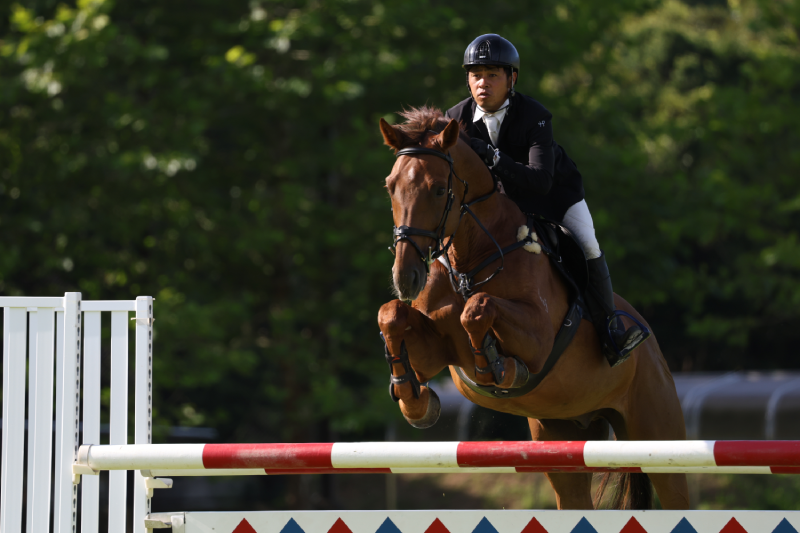

“Ngựa” đã được thêm vào “Animal First”, một tính năng tập trung chính xác vào cơ thể, khuôn mặt và mắt của con ngựa
EOS R6 có thể phát hiện ô tô và mô tô thể thao bao gồm xe công thức 1, ô tô đua GT, mô tô đường trường và mô tô địa hình. Khi phát hiện những chiếc xe đua như vậy, có thể phát hiện mũ bảo hiểm của người đua xe công thức tập trung hoặc xe đua có mái che. Trên cơ sở này, EOS R6 Mark II bổ sung thêm hai loại phương tiện có thể phát hiện “tàu hỏa” và “máy bay”. Khi phát hiện có “tàu hỏa”, ca bin của tàu cao tốc có thể bị phát hiện và lấy nét. Ngoài tàu cao tốc, nó còn có thể phát hiện toàn bộ thân tàu, khi phát hiện “máy bay”, nó có thể phát hiện và tập trung vào buồng lái, hoặc phát hiện và lấy nét vào thân máy bay, có thể tránh được tình huống một cách hiệu quả. tiêu điểm lệch khỏi bầu trời nền.
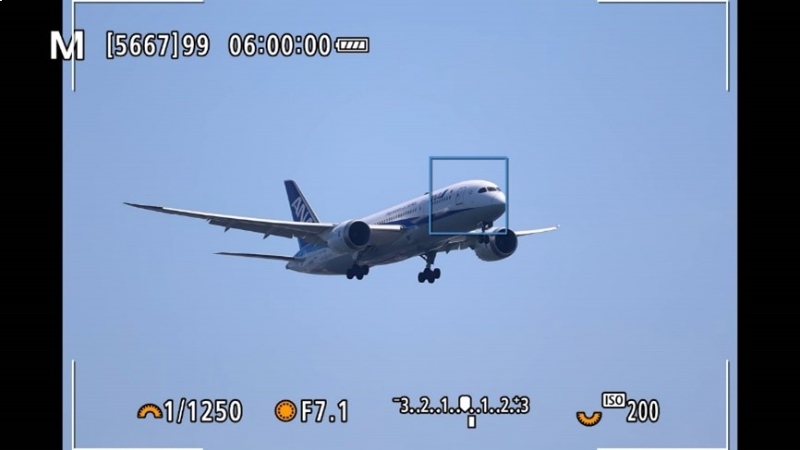

Ngoài việc mở rộng phạm vi nhận dạng có thể phát hiện, EOS R6 Mark II còn có hiệu suất lấy nét mạnh mẽ. Phạm vi lấy nét của nó bao gồm vùng cảm biến tối đa 100% (ngang) × 100% (dọc), hỗ trợ lên đến 1053 vùng lấy nét, và lấy nét thấp nhất Độ sáng đạt EV-6.5, có khả năng lấy nét tự động mạnh mẽ trong môi trường tối, lấy nét tự động chính xác trong môi trường thiếu sáng hoặc môi trường thiếu sáng khó nhận ra bằng mắt thường. Khi sử dụng các ống kính như zoom tele hoặc số nguyên tố siêu tele, vẫn có thể lấy nét tự động với độ chính xác cao ngay cả khi giảm khẩu độ tối đa xuống f / 22 khi sử dụng bộ mở rộng.
Nhiều công nghệ cải thiện chất lượng hình ảnh
EOS R6 Mark II sử dụng cảm biến hình ảnh CMOS full-frame mới được phát triển với khoảng 24,2 triệu điểm ảnh hiệu dụng và hoạt động cùng với bộ xử lý hình ảnh kỹ thuật số DIGIC X hiệu suất cao áp dụng một thuật toán hình ảnh mới, không chỉ có thể đáp ứng các yêu cầu lên đến 40 hình ảnh Chụp liên tục tốc độ cao ảnh full pixel mỗi giây, độ phân giải hình ảnh của nó có thể so sánh với EOS 5D Mark IV với khoảng 30,4 triệu pixel hiệu dụng. Mặc dù điểm ảnh đã được cải thiện so với EOS R6 nhưng hiệu suất độ nhạy vẫn không giảm, EOS R6 Mark II thường duy trì độ nhạy cao nhất ở ISO 102400 khi chụp ảnh, và vẫn có thể duy trì độ nhạy ở ISO 25600 khi quay phim.
Để tránh quang sai hoặc nhiễu xạ gây ra khi sử dụng khẩu độ lớn hoặc nhỏ, trước đó phải hy sinh độ sâu trường ảnh và biểu hiện hình ảnh. Công nghệ tối ưu hóa thấu kính kỹ thuật số thực hiện một loạt các hiệu chỉnh quang sai dựa trên giá trị thiết kế của từng thấu kính, do đó hiệu chỉnh quang sai và nhiễu xạ một cách hiệu quả. Nó không chỉ cải thiện độ phân giải của hình ảnh mà còn cải thiện kết cấu và độ biểu cảm của hình ảnh.
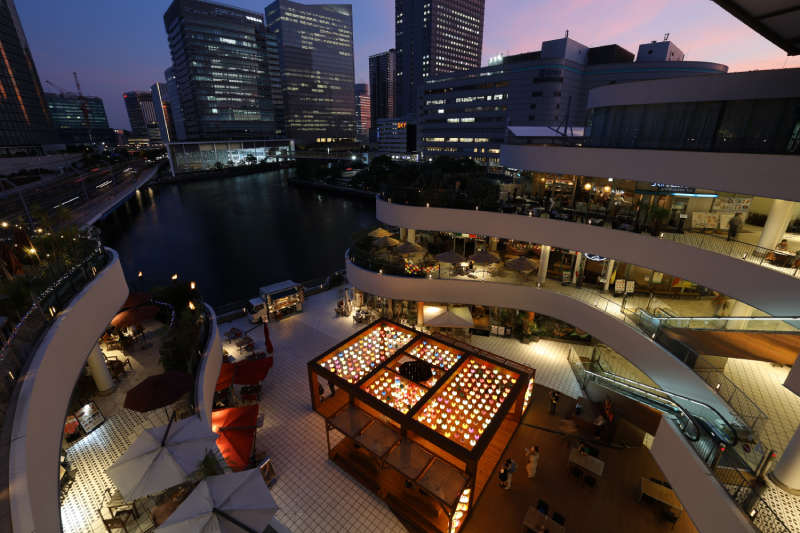

EOS R6 chỉ hỗ trợ chế độ HDR PQ và HDR [Ưu tiên dải động] truyền thống. Tuy nhiên, do hạn chế của nguyên tắc chụp nên không thể chụp ảnh HDR đối tượng chuyển động. EOS R6 Mark II đã thêm chế độ HDR [ưu tiên đối tượng chuyển động], thuận tiện cho người dùng dễ dàng thử chụp HDR trong nhiều cảnh khác nhau. Với chế độ mới này, các đối tượng chuyển động có thể được chụp rõ ràng chỉ trong 1 lần chụp, ngay cả khi chụp các cảnh có dải động cao và chênh lệch lớn về độ sáng, chẳng hạn như thân xe hơi hoặc máy bay bị phản chiếu do cơ thể phơi sáng.
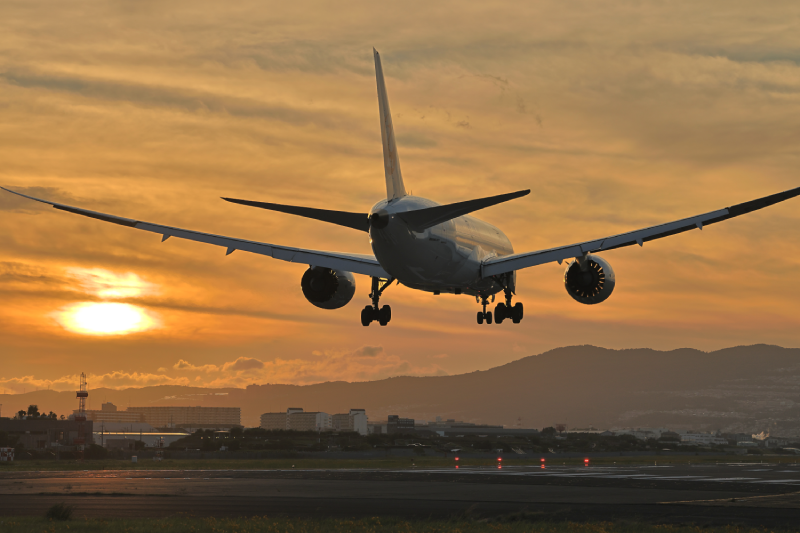
Hiệu suất quay phim ngắn mạnh mẽ đáp ứng nhu cầu của những người đam mê chuyên nghiệp và giàu kinh nghiệm
Các chức năng phim ngắn phong phú và phương pháp vận hành thuận tiện của EOS R6 Mark II không chỉ có thể đáp ứng nhu cầu của các chuyên gia mà còn đáp ứng nhu cầu của những người sáng tạo yêu thích video. EOS R6 Mark II có thể sử dụng cảm biến hình ảnh full-frame để chụp ảnh khi quay phim. Khi quay phim 4K, EOS R6 Mark II hỗ trợ quay phim 4K 59,94p full-frame siêu lấy mẫu 6K, có thể tận dụng tối đa góc rộng góc nhìn và hình ảnh ảo của toàn khung hình. Hiệu ứng chuyển đổi mở rộng phạm vi hiệu suất hình ảnh. Ngoài 4K, có thể thu được hình ảnh full-frame với chất lượng hình ảnh cao, góc nhìn rộng và hiệu ứng bokeh khi quay ở chế độ Full HD. Quá trình xử lý lấy mẫu 6K của EOS R6 Mark II giống như của EOS R3, sử dụng thuật toán gỡ lỗi chất lượng cao bắt nguồn từ hệ thống EOS CINEMA để tạo dữ liệu 6K cho ba màu RGB. Mỗi khung hình được tạo ở độ phân giải 6K và được ghi lại dưới dạng hình ảnh độ phân giải 4K chất lượng cao. Do đó, từ độ nhạy thấp đến độ nhạy cao, độ phân giải và tái tạo màu sắc đều tuyệt vời.


Lấy mẫu 6K cho clip 4K UHD
Ngoài khả năng quay clip 4K 59,94p full-frame không được cắt mẫu 6K, EOS R6 Mark II còn hỗ trợ các clip tốc độ khung hình cao Full HD 179,82p. Khi quay phim ngắn tốc độ khung hình cao full-HD, bạn cũng có thể có được góc xem rộng của toàn khung hình, với phối cảnh và hiệu ứng làm mờ giống như cảnh quay 4K và không có cảm giác không giống nhau ngay cả khi bạn kết hợp cả hai vật liệu để tạo hình ảnh.
EOS R6 Mark II được tích hợp gamma Canon Log 3 được sử dụng rộng rãi trong hệ thống máy quay ống kính rời EOS Cinema, giúp lưu giữ nhiều chi tiết hơn. Ngoài ra, Cinema Gamut được hỗ trợ, vì vậy nó có thể được sử dụng với máy quay Canon CINEMA EOS. EOS R6 Mark II hỗ trợ xuất các tệp RAW 10bit 6K 59,94p hoặc 12bit 3,7K (đã cắt) 59,94p RAW ra các thiết bị ghi bên ngoài qua HDMI. Ngoài ra, nó hỗ trợ chế độ HDR PQ có thể ghi hình ảnh dải động cao và định dạng MP4 8bit 4: 2: 0 có thể được sử dụng mà không cần xử lý hậu kỳ.
Để đáp ứng nhu cầu chụp ảnh trong thời gian dài, EOS R6 Mark II đã thực hiện các biện pháp để ngăn chặn hiệu quả sự gia tăng nhiệt độ trong máy khi được thiết kế, hỗ trợ ghi hình trong thời gian dài và hủy bỏ giới hạn thời gian lên đến 30 phút cho một bản ghi duy nhất. Ngoài ra, EOS R6 Mark II còn tích hợp nhiều chức năng phụ trợ cho phim ngắn chuyên nghiệp bao gồm màu sai, hiển thị mẫu ngựa vằn, đánh dấu tỷ lệ khung hình và hiệu chỉnh hiệu ứng hơi thở.
Nhiều phương pháp chống rung, hỗ trợ lên đến 8 stop, giúp chụp ảnh cầm tay dễ dàng hơn
EOS R6 Mark II hỗ trợ chống rung 5 trục trên thân máy và có thể đạt được bù rung khi được sử dụng với hầu hết các ống kính RF và EF. Khi được sử dụng cùng với ống kính RF có tính năng ổn định hình ảnh quang học và hỗ trợ cộng tác, tính năng ổn định hình ảnh thân máy và ổn định hình ảnh ống kính có thể hoạt động cùng nhau để đạt được hiệu ứng ổn định hình ảnh rõ ràng hơn, với tối đa 8 stop. Có thể chụp ảnh cầm tay ngay cả khi không có chân máy hoặc trong môi trường thiếu sáng, giúp bạn có nhiều cơ hội hơn để tiết lộ các kết quả không thể đạt được trước đó.

Khi quay video bằng ống kính không có tính năng ổn định hình ảnh, tính năng ổn định hình ảnh 5 trục của thân máy ảnh có thể hoạt động cùng với tính năng ổn định hình ảnh kỹ thuật số cho phim ngắn để giảm rung hình và chụp ổn định; nếu ống kính RF có tính năng ổn định hình ảnh quang học được sử dụng, nó có thể là Ổn định hình ảnh cơ thể, ổn định hình ảnh ống kính và ổn định hình ảnh kỹ thuật số video được phối hợp theo ba cách, có thể bù rung hiệu quả hơn, vì vậy nó có thể đối phó khi chụp với độ rung lớn hơn, chẳng hạn như chụp khi đang đi bộ.
Chức năng mở rộng phong phú, dễ dàng tận hưởng niềm vui nhiếp ảnh
EOS R6 Mark II được trang bị vô số chức năng mở rộng, chẳng hạn như lấy nét bù trừ, bố cục độ sâu trường ảnh trong máy ảnh, chụp toàn cảnh, bộ lọc sáng tạo, v.v. Khi sử dụng tính năng lấy nét và độ sâu trường ảnh trong máy ảnh bố cục, máy ảnh đang chụp một loạt các thay đổi tiêu điểm. Sau khi chụp ảnh, nó có thể được tổng hợp tự động trong máy ảnh, để thuận tiện trong việc kiểm tra hiệu ứng tổng hợp ảnh kịp thời. Nó rất hiệu quả khi chụp macro trong đó độ sâu trường ảnh có xu hướng trở nên nông hơn và các cảnh như phong cảnh và tĩnh vật nơi chất lượng hình ảnh bị giảm do khẩu độ quá nhỏ. Phạm vi có thể được chụp bởi chức năng chụp toàn cảnh nằm ngoài tầm với của ống kính góc rộng. Sau khi chụp nhiều ảnh ở chế độ chụp toàn cảnh, có thể tạo ảnh toàn cảnh ngang hoặc dọc chất lượng cao trong máy ảnh mà không cần xử lý hậu kỳ phần mềm.
Bộ lọc sáng tạo và chức năng tự động kết hợp cũng là những bộ lọc đầu tiên xuất hiện trong máy ảnh EOS full-frame. Bộ lọc sáng tạo có thể được áp dụng cho cả chụp ảnh và quay video. Bộ lọc sáng tạo cho video bao gồm năm hiệu ứng: Mơ, Phim cũ, Kỷ niệm, Trắng đen và Miniature., người dùng mới có thể dễ dàng chụp được những bức ảnh giàu cảm xúc. Chức năng tự động kết hợp có thể tự động ghi lại cảnh 2 đến 4 giây trước khi bắt đầu quay dưới dạng video ngắn trong khi chụp ảnh, sắp xếp và tóm tắt nội dung trong ngày và tự động tạo video tóm tắt (hỗ trợ full HD 29,97 p hoặc ít hơn).
Ngoài ra, EOS R6 Mark II còn hỗ trợ giao thức truyền UVC / UAC. Chỉ bằng cách kết nối máy ảnh và máy tính qua cáp USB, máy ảnh có thể cung cấp hình ảnh và âm thanh chất lượng cao cho các cuộc họp từ xa và phát trực tiếp bằng cách sử dụng phối cảnh full-frame .
Khả năng mở rộng, khả năng kết nối và độ bền
So với EOS R6, EOS R6 Mark II nâng cao hơn nữa hiệu suất giao tiếp. Máy ảnh và điện thoại thông minh có thể được kết nối thông qua cáp USB, có thể truyền các tập tin hình ảnh ổn định, và người dùng không giỏi kết nối không dây có thể dễ dàng đọc hình ảnh từ điện thoại thông minh. Kết nối Wi-Fi mới hỗ trợ dải tần 5GHz, có thể tránh nhiễu bên ngoài tốt hơn so với dải tần 2,4GHz trước đây, nhờ đó hình ảnh có thể được truyền đến điện thoại thông minh với tốc độ cao.
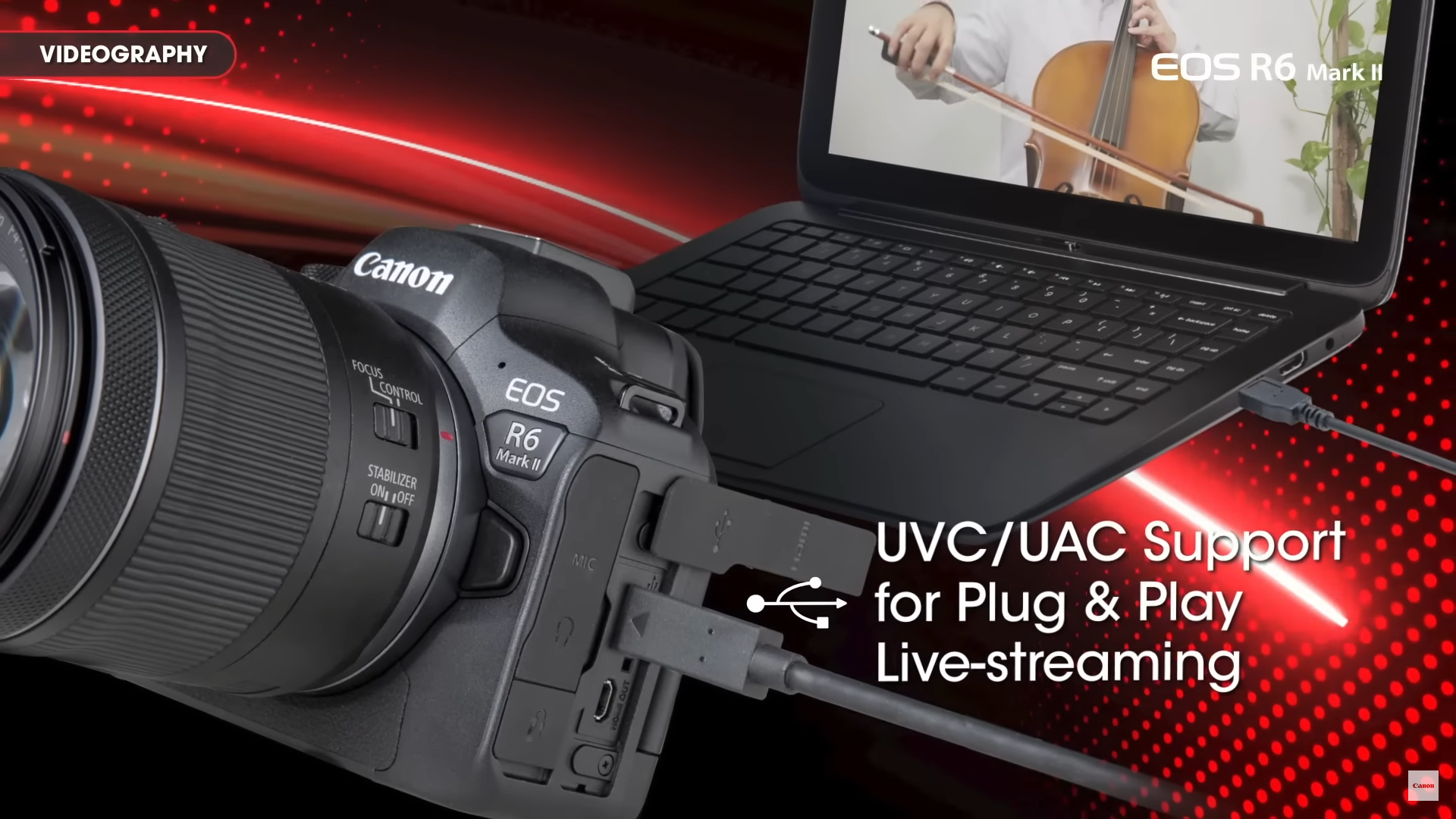
Về thời lượng pin, nhờ hệ thống quản lý năng lượng mới, thời lượng pin của EOS R6 Mark II đã được cải thiện đáng kể. Khi sử dụng màn hình LCD để lấy khung hình ở nhiệt độ phòng, máy có thể chụp khoảng 760 ảnh ở chế độ tiết kiệm năng lượng và khoảng 760 ảnh ở chế độ mịn. Đồng thời, EOS R6 Mark II cũng có thể sử dụng hộp đựng pin và tay cầm BG-R10. Hộp đựng pin và tay cầm này có thể chứa 2 pin lithium dung lượng cao LP-E6NH, có thể được sử dụng tự tin khi chụp trường dài hạn hoặc quay phim ngắn. sử dụng. Ngoài ra, EOS R6 Mark II còn hỗ trợ sạc hoặc cấp nguồn thông qua bộ chuyển đổi nguồn USB PD-E1. Khi cần chụp liên tục trong thời gian dài, bạn không phải lo lắng về thời lượng pin và có thể tập trung vào việc chụp.
EOS R6 Mark II được trang bị một đế giày đa chức năng mới, có thể được sử dụng với bộ điều hợp XLR, cũng là một giao diện giày đa chức năng, micrô âm thanh nổi định hướng DM-E1D, bộ điều hợp điện thoại thông minh AD-P1 và EL- 5 đèn flash.
Type
- Compatible with UHS-II
- Eye-Fi cards and Multimedia cards (MMC) are not supported.
Image Sensor
-
Self Cleaning Sensor Unit
- Removes dust adhering to the low-pass filter.
- At power off only / Enable / Disable. Performed automatically (taking about approx. 2 sec. as indicated on the screen) or manually (taking about approx. 8 sec. as indicated on the screen).
- After manually activated cleaning, the camera will automatically restart (Power OFF to ON).
- When [Multi Shot Noise Reduction], [Multiple exposures], or [HDR mode] is set, [Clean now] and [Clean manually] cannot be selected.
-
Dust Delete Data acquisition and appending
- The coordinates of the dust adhering to the low-pass filter are detected by a test shot and appended to subsequent images.
- The dust coordinate data appended to the image is used by the EOS software to automatically erase the dust spots.
- Not available with RF-S/EF-S lenses, in cropped shooting, during focus bracket shooting, in FAW burst mode, or multiple-exposure shooting.
- Manual cleaning (by hand)
Recording System
* At H+ Drive setting (12 fps), using Mechanical or 1st-curtain Electronic shutter.
*1: Number of shots using a 32 GB card that conforms to Canon testing standards.
*2: Number of shots using a 32 GB UHS-II card that conforms to Canon testing standards.
*3: When set to [HDR shooting (HDR PQ): Disable].
*4: When set to [HDR shooting (HDR PQ): Enable].
-
File numbering methods
-
Continuous numbering
- The numbering of captured images continues even after you replace the card.
-
Auto reset
- When you replace the card, the numbering will be reset to start from 0001. If the new SD card already contains images, the numbering will continue from the last recorded image in the card.
-
Continuous numbering
-
Manual reset
- Resets the file number to 0001, and creates a new folder automatically.
- Auto
- Standard
- Portrait
- Landscape
- Fine Detail
- Neutral
- Faithful
- Monochrome
-
User Defined 1-3
- In Scene Intelligent Auto, [Auto] will be set automatically.
- [Standard] is the default setting for [User Def. 1-3].
White Balance
- Auto (Ambience priority/White priority)
- Day Light
- Shade
- Cloudy*1
- Tungsten light
- White fluorescent light
- Flash
- Custom (Custom WB)
- Color temperature*2
*2: White balance can be adjusted during movie recording.
Viewfinder
- Maximum burst
- Possible shots/Sec. until self-timer shoots
- Focus Bracketing/ Multiple-exposure/HDR shooting/Multi Shot Noise Reduction/Bulb time/Interval timer
- Shooting mode
- AF method
- AF operation
- Image quality
- Card
- Drive mode
- Metering mode
- No. of remaining shots for focus braketing, multiple exposures, or interval timer
- Electronic level
- Movie recording time available
- Battery level
- Image Stabilizer (IS mode)
- Histogram (Brightness/RGB)
- Quick Control button
- Anti-flicker shooting
- White balance/White balance correction
- Picture style
- Auto Lighting Optimizer
- Still photo cropping / Aspect ratio
- AF point (1-point AF)
- AEB/FEB
- View Assist
- HDR PQ
- Flash ready / FE lock / High-speed sync
- Electronic shutter
- Touch shutter / Create folder
- AE lock
- Shutter speed / Multi-function lock warning
- Aperture value
- Wi-Fi® function
- Wi-Fi® signal strength
- Bluetooth® function
- Exposure simulation
- Magnify button
- ISO speed
- Highlight tone priority
- Exposure compensation
- Exposure level indicator
Autofocus
- Spot AF
- 1-point AF
- Expand AF area: Above/below/left/right
- Expand AF area: Around
- Flexible Zone AF 1
- Flexible Zone AF 2
- Flexible Zone AF 3
- Whole area AF
- Auto
- People
- Animals (dogs / cats / birds / horses)
-
Vehicles (motorsports cars or motorcycles / aircraft / trains)
* Certain types of animals or vehicles may not be detected, depending on shape and appearance
- Selects the eye closer to the camera (as detected from the angle of the face).
- At the same distance from the camera, selects the eye closer to the center of the image.
- Can be selected by touch.
- Can be selected with the Multi-controller.
Exposure Control
- Evaluative metering (AF point-linked)
- Partial metering (approx. 5.9% of the area at the center of the screen)
- Spot metering (approx. 3.0% of the area at the center of the screen)
- Center-weighted average metering
- Scene Intelligent Auto
- Hybrid Auto
- Special Scenes
- Creative Filters
- Flexible-priority AE
- Program AE
- Shutter-priority AE
- Aperture-priority AE
- Manual Exposure
- Bulb Exposure
- Custom Shooting Modes C1, C2, C3
- For [Highlight tone priority], the settable ISO speed range will be ISO 200 to 102400.
- Expanded ISO cannot be set for HDR mode or during HDR PQ shooting.
ISO Auto range settings in still photo shooting
*1: ISO 200 when set to [Highlight tone priority: Enable/Enhanced].
*2: Varies depending on the [Maximum] and [Minimum] settings for [Auto range].
*3: If outside the setting range, changed to the value closest to ISO 400.
-
Auto AE lock
- AE is locked as soon as subjects are in focus using One-Shot AF when set to selected metering mode in [C.Fn2: AE lock meter. mode after focus].
-
User-set AE lock.
- Use the AE lock button (update by pressing the button again) in Fv, P, Tv, Av, and M mode.
- Enabled in all metering modes.9
Shutter
- Electronic first curtain
- Mechanical shutter
- Electronic shutter*
Image Stabilization (IS mode)
- Always on
- Only for shot (no stabilization in viewfinder/LCD screen between shots) Coordinated IS when used with Canon RF or RF-S lenses having optical Image Stabilization
External Speedlite
Drive System
HDR Shooting
Video Shooting
* Recording in AAC when [Audio compression] (C.Fn4) is set to [Enable] or Linear PCM when set to [Disable].
Click here to view the full specifications PDF.
* Bit rate only applies to video output, not audio or metadata.
* Audio is recorded when [C.Fn4 audio compression:Enable] (Audio: AAC) is set.
* Movie recording stops when the maximum recording time per movie is reached.
* No audio is recorded for approx. the last two frames with the compression method for movie recording quality set to IPB (Standard) or IPB (Light) and the camera set to [C.Fn4 Audio compression: Enable]. Moreover, the video and sound may be slightly out of sync when movies are played back in Windows.
* Mbps — megabits per second (8 megabits = 1 megabyte)
Click here to view the full specifications PDF.
* Bit rate only applies to video output, not audio or metadata.
* Audio is recorded when [C.Fn4 audio compression:Enable] (Audio: AAC) is set.
* Movie recording stops when the maximum recording time per movie is reached.
31 min.
* No audio is recorded for approx. the last two frames with the compression method for movie recording quality set to IPB (Standard) or IPB (Light) and the camera set to [C.Fn4 Audio compression: Enable]. Moreover, the video and sound may be slightly out of sync when movies are played back in Windows.
* Mbps — megabits per second (8 megabits = 1 megabyte)
LCD Screen
- Anti-smudge coating applied.
- Anti-reflection coating not applied.
Playback
Quick Control Function
- View 1: Conventional Quick Control screen
- View 2: Cinema EOS-style Quick Control screen
Image Protection and Erase
- Single image (select image)
- Select range
- All images in folder
-
All images on card
- Image browsing and image search can be based on ratings.
- Ratings-based image selections also possible with DPP.
- All found images (only during image search)
- Select images to erase
- Select range
- All images in folder
- All images on card
- All found images (only during image search)
Direct Printing
DPOF: Digital Print Order Format
Wi-Fi®
- Images can be viewed, controlled, and received using a smartphone.
- Remote control of the camera using a smartphone is possible depending on the Camera Connect specifications.
- Images can be sent to a smartphone.
- NFC connection: Not supported
- Supported images: JPEG, HEIF, RAW/C-RAW, MP4 video files
- Transcoding while sending: Size to send (original / reduced size); Quality to send (original / compressed)
Bluetooth®
Customization
Customizable Buttons
Click here to view the full specifications PDF.
Interface
- For PC communication
- Terminal type: USB Type-C
- Shared with terminal for in-camera charging with the USB Power Adapter PD-E1.
- In-camera Charging: Equivalent to USB type-C (5 V/1.5 A), but use should be restricted to USB Power Adapter PD-E1.
- Images can be displayed through the HDMI output and on screen at the same time.
- Images will not be displayed unless [NTSC] or [PAL] is properly set according to the video system of the TV set.
Power Source
- With the AC Adapter AC-E6N + DC Coupler DR-E6, AC power is possible.
- With the USB Power Adapter PD-E1, in-camera charging of LP-E6NH is possible. The USB Power Adapter PD-E1 is not compatible with powering the camera.
- Remaining capacity percentage
- Shutter count, on current battery charge
- Recharge performance (batterys ability to hold charge; displayed in 3 levels)
- Based on CIPA testing standards.
Dimensions and Weight
Operating Environment
Working Conditions
85% or less
-
Hướng dẫn chi tiết
-

Unbox Video
-

Video
Lý do chọn LBM
LBM
1900 55 8809


